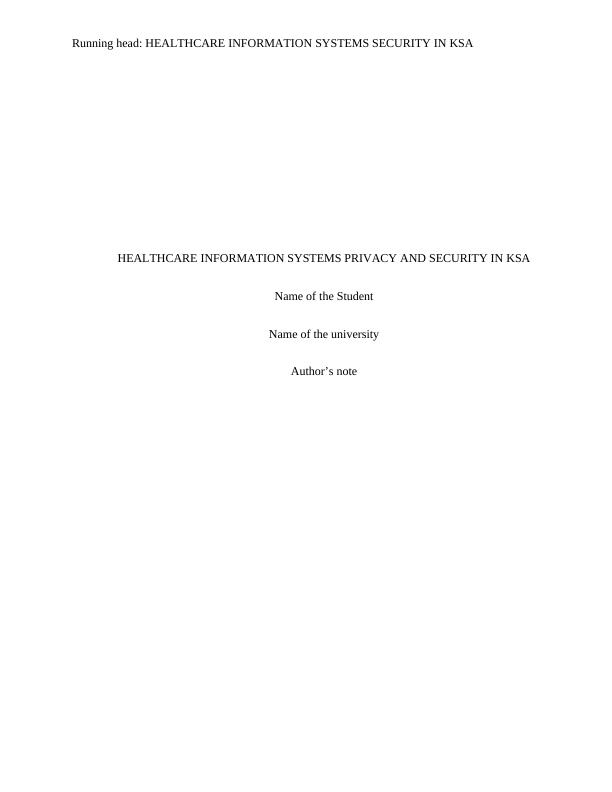Healthcare Information Systems Privacy and Security in KSA
9 Pages1966 Words81 Views
Added on 2023-04-23
About This Document
This paper evaluates the HIPAA security administrative, physical, and technical safeguards for electronic protected health information (ePHI) in KSA. It discusses the privacy, confidentiality, and security of electronic health information, HIPAA security model, administrative, physical, and technical safeguards, and healthcare organization security program.
Healthcare Information Systems Privacy and Security in KSA
Added on 2023-04-23
ShareRelated Documents
End of preview
Want to access all the pages? Upload your documents or become a member.
Hipaa Statues Information 2022
|6
|1238
|19
Security Considerations
|5
|868
|265
Network Defense and Counter Measures
|9
|1869
|92
Guidelines of HIPAA in Preserving Patients' Data Confidentiality and Privacy
|4
|893
|173
HIPAA's Data and Privacy Protection Requirements
|18
|3571
|61
Health IT data ethics
|14
|2688
|475



